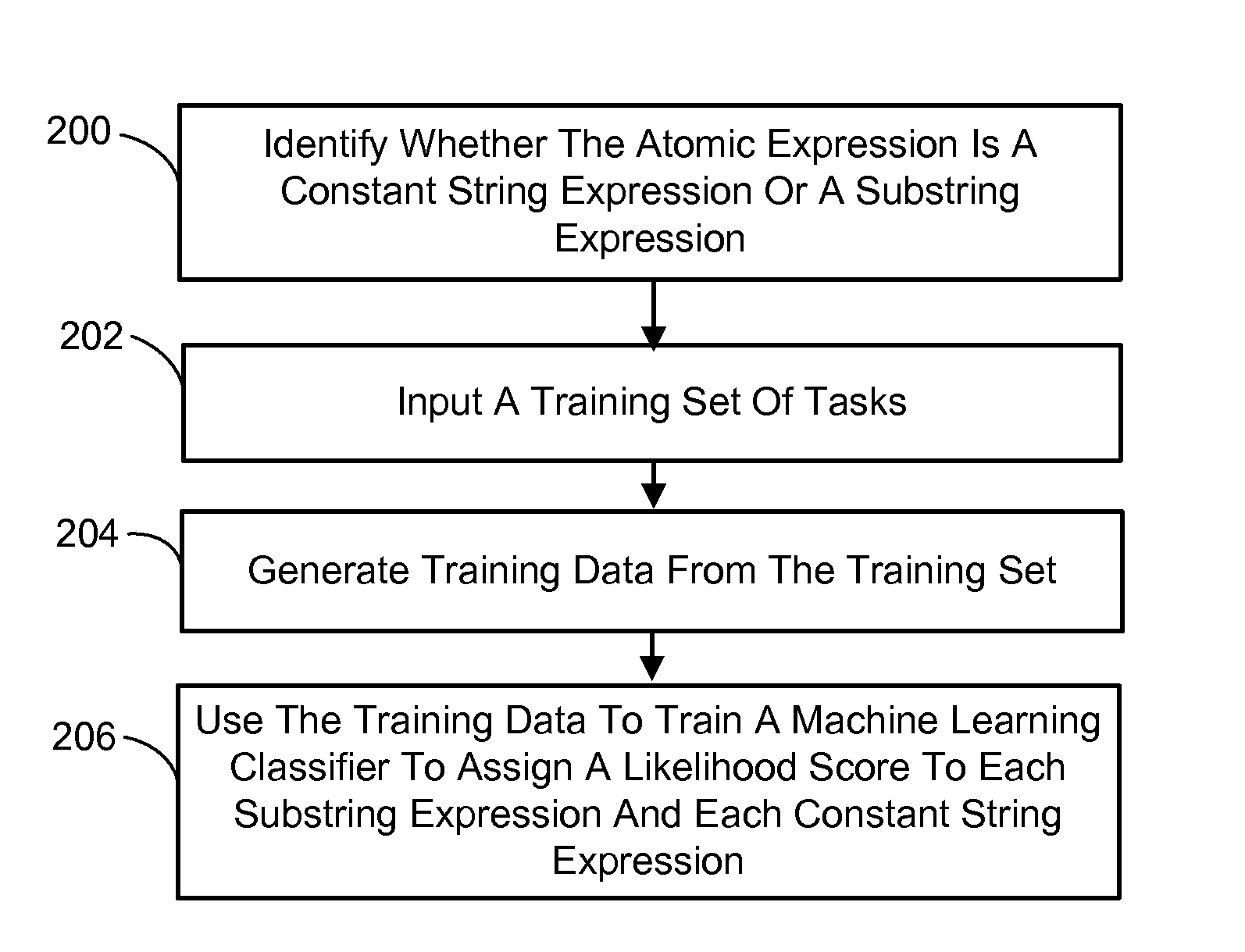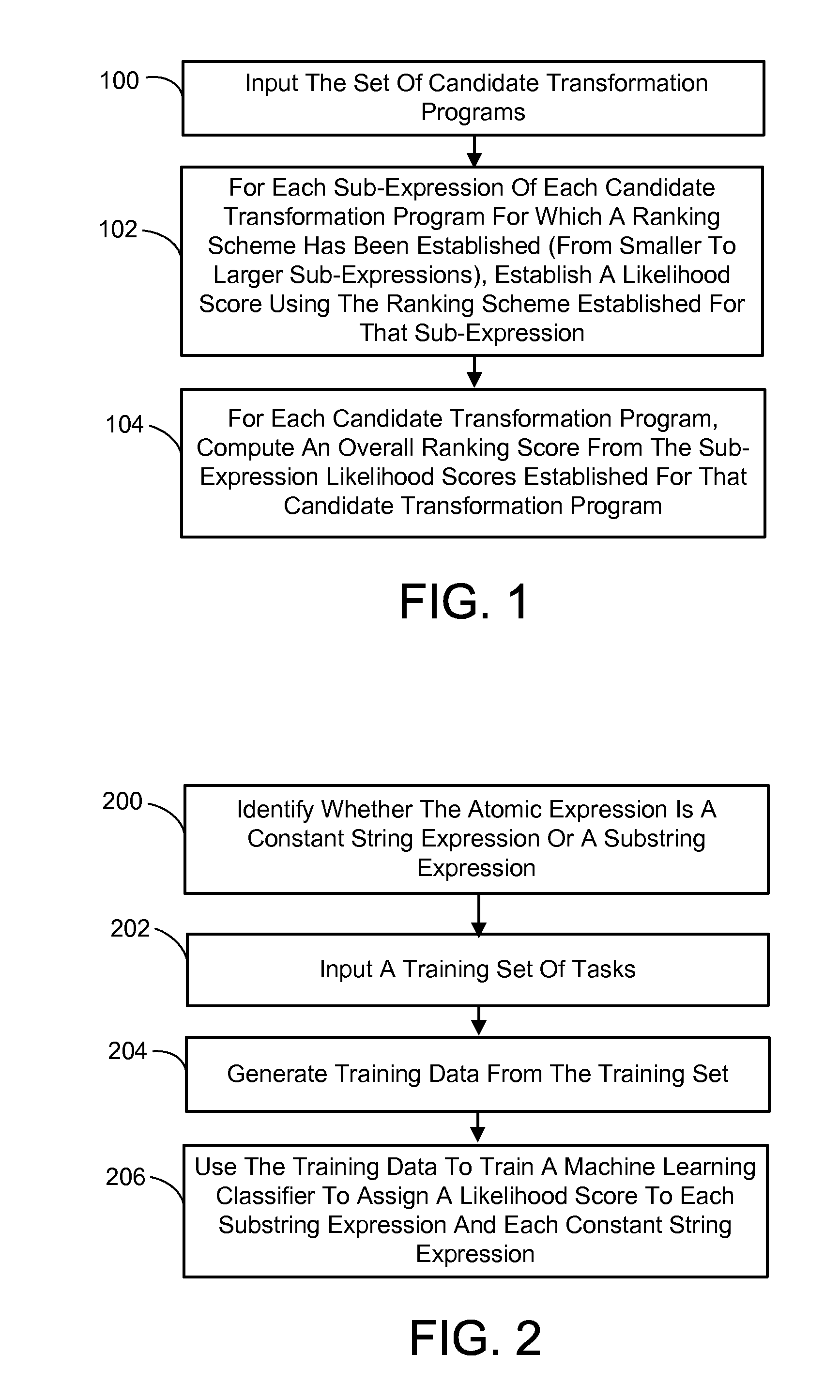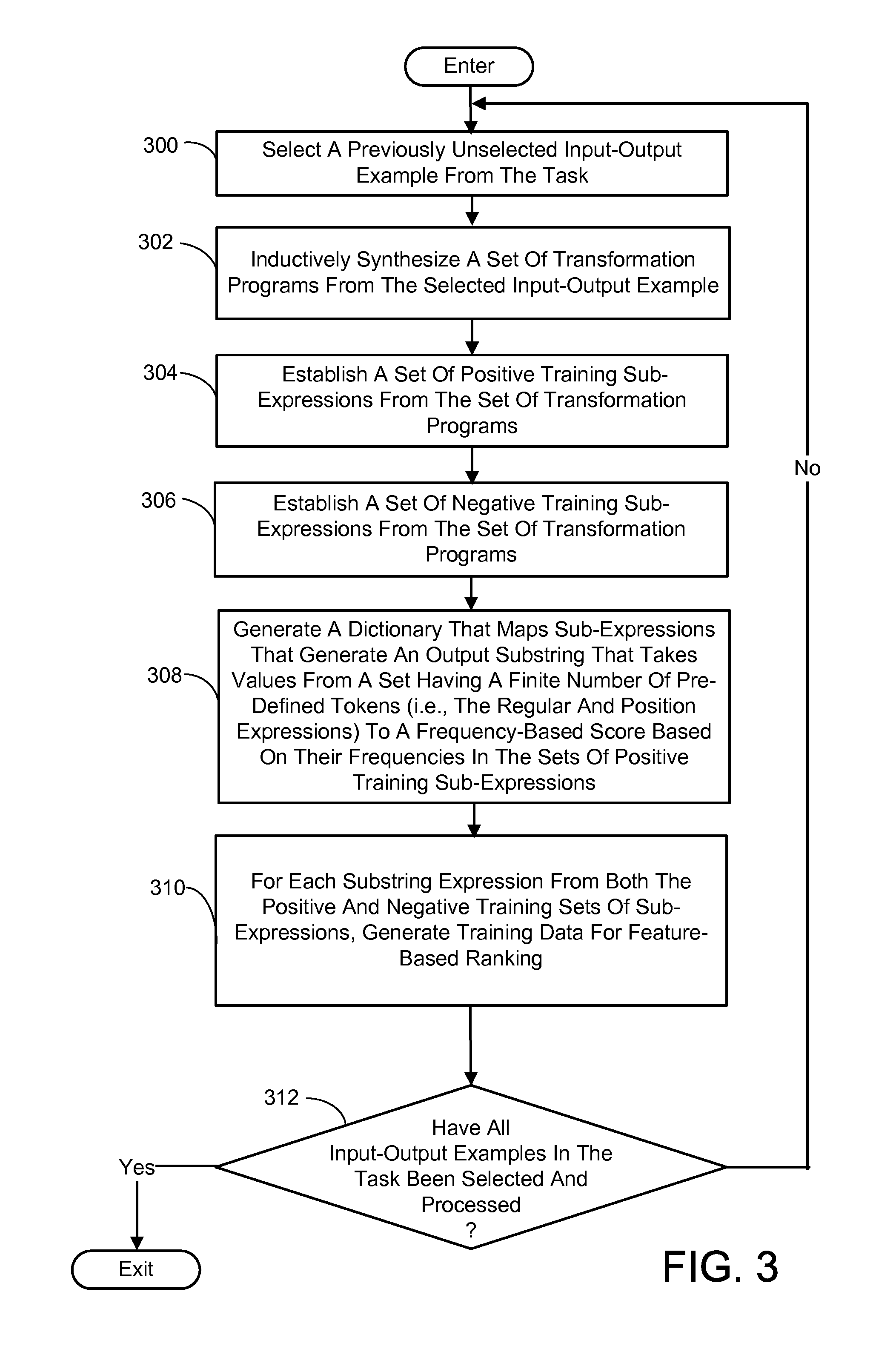Ranking for inductive synthesis of string transformations
a technology of inductive synthesis and transformation, applied in the field of ranking for inductive synthesis of string transformation, can solve the problems of users not being able to provide an on-demand number of input-output examples to learn the desired program, and it is possible to be harder than writing the program
- Summary
- Abstract
- Description
- Claims
- Application Information
AI Technical Summary
Benefits of technology
Problems solved by technology
Method used
Image
Examples
Embodiment Construction
[0019]In the following description of ranking technique embodiments reference is made to the accompanying drawings which form a part hereof, and in which are shown, by way of illustration, specific embodiments in which the technique may be practiced. It is understood that other embodiments may be utilized and structural changes may be made without departing from the scope of the technique.
[0020]It is also noted that for the sake of clarity specific terminology will be resorted to in describing the ranking technique embodiments described herein and it is not intended for these embodiments to be limited to the specific terms so chosen. Furthermore, it is to be understood that each specific term includes all its technical equivalents that operate in a broadly similar manner to achieve a similar purpose. Reference herein to “one embodiment”, or “another embodiment”, or an “exemplary embodiment”, or an “alternate embodiment”, or “one implementation”, or “another implementation”, or an “e...
PUM
 Login to View More
Login to View More Abstract
Description
Claims
Application Information
 Login to View More
Login to View More - R&D
- Intellectual Property
- Life Sciences
- Materials
- Tech Scout
- Unparalleled Data Quality
- Higher Quality Content
- 60% Fewer Hallucinations
Browse by: Latest US Patents, China's latest patents, Technical Efficacy Thesaurus, Application Domain, Technology Topic, Popular Technical Reports.
© 2025 PatSnap. All rights reserved.Legal|Privacy policy|Modern Slavery Act Transparency Statement|Sitemap|About US| Contact US: help@patsnap.com



